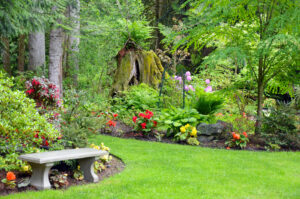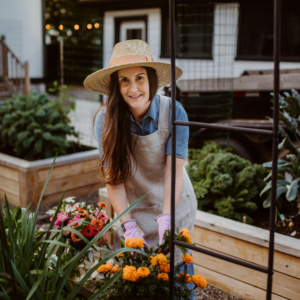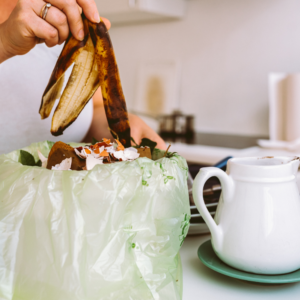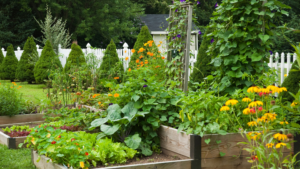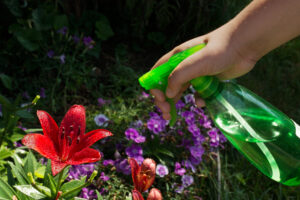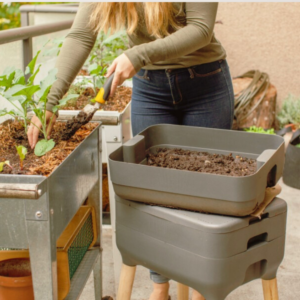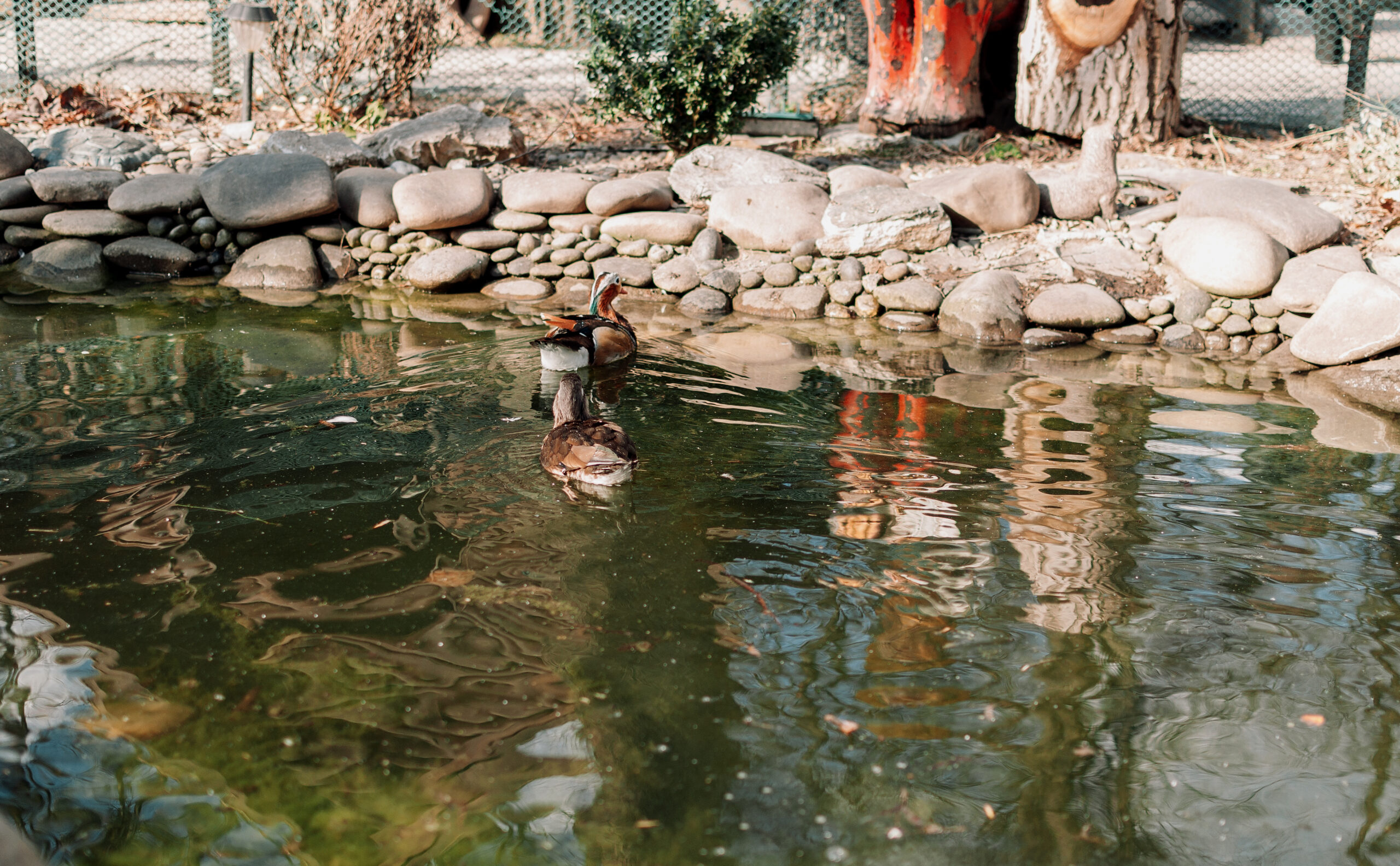
Have you ever considered the multifaceted benefits of ducks? Not only are they charming companions, but they also serve as natural pest controllers and efficient fertilizers for your garden. Envision turning your backyard into a tranquil oasis, enriching its ecological balance and visual allure. In this article, we will explore creative and practical DIY backyard duck pond ideas, elevating your outdoor environment and establishing a sustainable haven for these delightful waterfowls.
Planning Your Duck Pond
As you create your backyard duck pond, it’s crucial to consider various factors to ensure a successful and enjoyable project. Beyond deciding on the size and location, the type of pond you choose can significantly impact the outcome. Whether you opt for a natural pond with native flora or a stock tank for easier installation, selecting the perfect design for your space is paramount in crafting a tranquil oasis for your feathered friends. As you map out your pond project, let’s explore these backyard duck pond ideas.
Determining the Right Size and Location: The size of a small or large pond depends on the available space and the number of ducks you plan to keep. Optimal sunlight and proximity to a water source are vital factors. Additionally, ensuring the pond is away from any electrical lines is a safety must.
Selecting the Perfect Design for Your Space: From a DIY duck pond to a professionally designed garden pond, the design should integrate seamlessly with your garden’s aesthetics. Incorporating aquatic plants and shallow areas enhances the pond’s functionality and beauty. Aiming for a minimum depth of 2 feet in garden ponds is advisable to maintain a harmonious ecosystem. This depth helps deter algae growth and provides ample space for wildlife.
Understanding Water Requirements and Filtration Systems: Maintaining clean water is paramount. A robust filter system or a natural filtration system, using pond plants and aquatic plants, helps maintain the balance and clarity of water, making it a good idea for duck keepers.
Filtration Systems
- Mechanical Filters: Options include skimmers for continuous surface cleaning and submerged filters to capture particles from the water column.
- Biological Filters: Harness beneficial bacteria to decompose organic waste into less harmful compounds, which can serve as plant fertilizers.
- UV Clarifiers: Employ ultraviolet light to eradicate algae and pathogens, maintaining clear water and minimizing disease risks.
- Natural Filtration: Integrate aquatic plants such as water lilies, cattails, and duckweed, which naturally filter water by absorbing nutrients and enhancing oxygenation, contributing to functionality and aesthetics.
Water Requirements Volume
Allocate approximately 3-5 square feet of water surface area per duck to accommodate swimming, foraging, and maintaining water cleanliness.
- Depth: Ensure a minimum depth of 2 feet in the pond to enable ducks to submerge and clean their feathers thoroughly.
- Daily Water Intake: Provide each duck with two to four cups daily, adjusting according to temperature and humidity levels.
Building the Perfect Duck Pond
Here’s a step-by-step guide to help you build the perfect duck pond:
1. Plan and Design: Begin by carefully selecting the location and determining the size of your duck pond. Consider crucial factors like sunlight exposure, distance from your home, and ease of access for maintenance. Remember an existing electrical line and other potential obstacles when sketching your design. Include dimensions and any desired additional features, such as a fountain or waterfall, to create a tranquil and visually appealing oasis for both you and your ducks.
Before digging in your yard, checking for underground utilities, including electrical lines, is crucial to avoid damaging them and causing potential safety hazards. Here’s how you can do that:
- Dialing 811 connects you to the national call-before-you-dig phone number in the United States. This prompts your local one-call center to notify the relevant utility companies about your excavation plans.
- Alternatively, visit your state’s 811 center’s website to submit a request electronically. Provide project details and location information to initiate the process.
- Utility companies dispatch locators to mark buried utilities’ approximate locations using paint or flags. Each utility type is designated by a specific color code: red denotes electric power lines, yellow indicates gas, blue represents water, etc.
- Before excavation, ensure all utilities have marked their lines or confirmed the absence of conflicts. This step confirms safety and prevents accidental damage to buried infrastructure.
Remember, calling or submitting a request a few days before starting your project is essential to give the utility companies enough time to respond. This service is free, helps protect you from injury, and prevents service disruptions. Always dig carefully around the marks, not on them, as some utility lines may be buried at a shallow depth.
2. Gather Materials: Gather the necessary materials depending on your chosen design. These may include a pond liner (natural or preformed), rocks or bricks for edging, a pump and filter system (if desired), and aquatic plants.
3. Prepare the Site: Clear the area of any debris or vegetation. If digging a pond, use a shovel or excavator to determine the desired shape and depth. Ensure the edges are level and smooth to prevent leaks.
4. Install the Liner: When using a pond liner, carefully lay it out in the excavated area, ensuring no wrinkles or folds could compromise its integrity. Before laying the liner, consider adding a protective layer, such as sand or underlayment fabric, to the bottom of the pond to prevent punctures or damage. Once in place, anchor the edges of the liner securely with rocks or bricks to hold them in place and maintain the desired shape of the pond.
5. Add Water: As it fills, adjust the liner to eliminate wrinkles or bulges. Fill the pond to the desired level, taking care not to overfill.
6. Incorporate Plants and Features: Introduce aquatic plants such as water lilies, duckweed, and cattails to the pond. These plants enhance the aesthetic appeal and provide natural filtration and habitat for ducks and other wildlife. Consider adding floating plants for additional shade and cover.
7. Maintain and Monitor: Regularly monitor the water quality and plant health to ensure a thriving ecosystem. Perform routine maintenance tasks such as removing debris, cleaning filters (if applicable), and trimming plants as needed.
Building a duck pond requires patience and effort, but the result is worth it. Following these step-by-step instructions and incorporating natural elements will create a sustainable ecosystem you and your ducks will love.
Backyard Duck Pond Ideas: Adding the Perfect Accessories
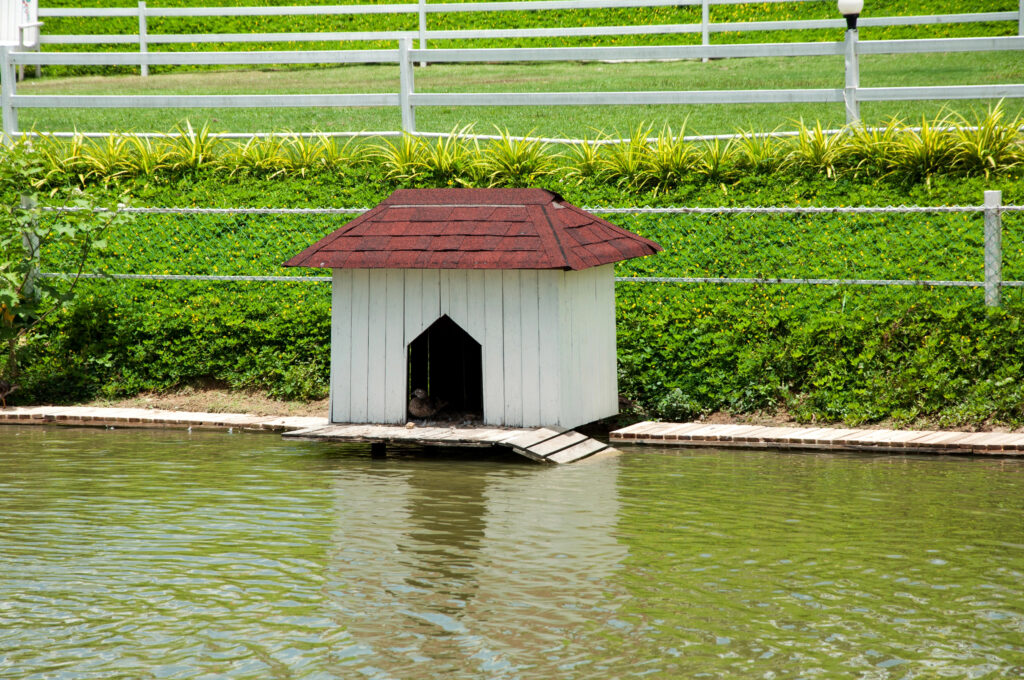
Duck House: Providing a duck house near your pond offers shelter and security for your ducks. A well-designed duck house should be elevated above the ground to prevent flooding. It should include features like nesting boxes, ramps for easy access, and proper ventilation to maintain air quality. Consider using natural, non-toxic materials like untreated wood to construct the duck house and ensure its spacious enough to accommodate your flock comfortably.
Bedding Material: Wood chips or straw can be used as bedding inside the duck house to provide warmth and comfort for your ducks. Regularly clean and replace the bedding to maintain cleanliness and prevent the buildup of bacteria and odors. Avoid using cedar chips, as they can harm ducks’ respiratory systems.
Natural Filtration Elements: Incorporating natural filtration elements into your pond helps maintain water quality and creates a balanced ecosystem. Consider adding aquatic plants like water hyacinth, lettuce, and hornwort, which absorb excess nutrients and oxygenate the water. Additionally, installing a biofilter or bog area along the pond’s edge can further enhance filtration by promoting the growth of beneficial bacteria that break down organic waste.
Safety Measures and Predator Protection: Ensuring the safety of your ducks is paramount in creating a sustainable ecosystem. Install fencing around the perimeter of your pond to prevent access by predators such as raccoons, foxes, and birds of prey. Ensure the fencing extends above and below ground level to deter digging and climbing. Consider adding motion-activated lights or alarms to prevent nocturnal predators further. Additionally, shallow areas or ramps along the pond’s edge should be provided to allow ducks easy access in and out of the water, reducing the risk of drowning.
Maintaining Your Duck Pond
Regular Cleaning and Maintenance Tips: Duck poop and dirty water can quickly turn your pond unsightly. Regular cleaning and the right filter system are essential to keep the water fresh.
Managing Water Quality for Your Ducks’ Health: Ensuring fresh water and managing duck poop efficiently with a filter pond system is crucial for the health of your ducks and the pond’s ecosystem.
Seasonal Care and Adjustments: Heavy rains or dry spells can affect your pond’s water level and quality. Adjusting the water source and filter media accordingly is essential for larger ponds and even a tiny kiddie pool setup.
Inspirational Backyard Duck Pond Ideas
Natural Pond: Create a natural pond environment that mirrors ducks’ habitat, utilizing native flora, strategically placed rocks, and driftwood to emulate a wilderness setting. Integrate water features such as shallow zones, submerged logs, and floating vegetation to foster a rich ecosystem catering to ducks’ and other wildlife’s needs.
Koi Pond Water Garden: Design a water garden that accommodates the beauty of a koi pond and the functionality of a duck habitat. Integrate water plants like lilies, lotus flowers, and floating plants for aesthetics while providing hiding spots and foraging areas for ducks. Use natural stone or decorative rocks to border the pond and add visual interest.
Rustic Farmhouse Charm: Embrace a rustic farmhouse theme by incorporating vintage elements like old watering cans, wooden barrels, and weathered signage around your duck pond. Create a cozy atmosphere with a quaint duck house made from reclaimed wood, a tin roof, charming details like window boxes, and a front porch.
Japanese Zen Garden: Infuse tranquility and serenity into your backyard with a Japanese-inspired duck pond surrounded by lush greenery, bamboo accents, and smooth river stones. Incorporate a gently cascading waterfall or a bubbling fountain to add movement and sound, creating a peaceful retreat for ducks and humans alike.
Modern Minimalist Design: Opt for a sleek and minimalist approach with a contemporary duck pond featuring clean lines, geometric shapes, and minimalist landscaping. Use smooth concrete, stainless steel, and glass to create a sophisticated aesthetic that complements modern architecture and outdoor living spaces.
Whimsical Fairy Garden: Delight your inner child with a whimsical duck pond surrounded by enchanting fairy garden elements like miniature houses, tiny bridges, and colorful flowers. Add whimsy with decorative accents like fairy lights, gazing balls, and whimsical sculptures, creating a magical oasis that sparks the imagination.
DIY Upcycled Pond: Get creative and eco-friendly by repurposing materials like old tires, bathtub containers, or livestock troughs to create a budget-friendly DIY duck pond. Use non-toxic pond liners and natural filtration methods to ensure a healthy environment for your ducks while reducing waste and environmental impact.
Common Challenges and Solutions
- Algae Growth: One of the most common challenges in pond maintenance is algae growth, which can turn your pond water green and murky. To combat algae, implement natural solutions such as adding aquatic plants like water lilies and submerged oxygenators to outcompete algae for nutrients and oxygen. Additionally, consider installing a UV clarifier or algaecide to control algae blooms and maintain water clarity. Regularly remove excess algae by skimming the surface and cleaning filtration systems to prevent buildup.
- Water Quality Issues: Poor water quality can arise from excess nutrients, decaying organic matter, and inadequate filtration. Conduct regular water testing to monitor pH levels, ammonia, nitrite, and nitrate levels, and address any imbalances promptly. Install a filtration system with mechanical, biological, and chemical components to remove debris, break down waste, and neutralize harmful substances. Perform partial water changes to dilute pollutants and maintain optimal water conditions.
- Duck Health Concerns: Ducks are susceptible to various health issues, including parasitic infections, bacterial diseases, and nutritional deficiencies. Provide a balanced diet supplemented with appropriate nutrients and vitamins to safeguard their health. Ensure access to fresh water at all times, and regularly clean and disinfect feeding and drinking areas to prevent contamination. Monitor your ducks for signs of illness or injury and seek veterinary care promptly if needed.
- Predator Attacks: Predators like raccoons, foxes, and birds of prey threaten ducks, especially during nesting season or when they’re vulnerable while swimming in the pond. Implement predator deterrents such as motion-activated lights, fencing, and netting to protect your ducks from harm. Create safe retreats like duck houses or shelters where ducks can seek refuge from predators, and regularly inspect and reinforce defenses to prevent breaches.
- Maintaining Water Levels: Maintaining consistent water levels in your pond is essential for the health and stability of the ecosystem. Monitor water levels regularly and top up as needed to compensate for evaporation and runoff. Install a water level regulator or automatic fill valve to maintain optimal water levels automatically, reducing the need for manual intervention.
FAQs on Backyard Duck Pond Ideas
Are there laws that I need to know about when having backyard ducks? Yes, there are laws in certain cities regarding the keeping of backyard ducks. For instance, in Federal Way, Washington, residents can keep a limited number of chickens and ducks without needing a permit or license from the city. Residential lots less than 35,000 square feet may hold any combination of up to four chickens and ducks. Coops exceeding 200 square feet require a building permit, and there are specific requirements for the coop’s location and maintenance. It’s important to note that laws can vary significantly from one city to another. Some towns may restrict the number of ducks you can keep, require permits, or have specific zoning regulations. To find out the exact laws in your city, it’s best to consult your local government’s website or contact city officials directly. For a general understanding, websites like BackYard Chickens and Off Grid Permaculture provide information on how to find out what’s allowed in your area. However, checking with your local city code is recommended for the most accurate and up-to-date information.
What is a stock tank, and why is it commonly used for duck ponds? A stock tank, typically crafted from galvanized metal or plastic, serves as a convenient container for a duck pond, providing ducks with a space for swimming and bathing. Its popularity among backyard duck keepers stems from its durability, ease of installation, and manageable nature, making it an appealing alternative to digging a permanent pond. This option is a great idea for those needing a small pond but lacking the means to excavate. Additionally, some individuals have successfully utilized a small kiddie pool.
What are the minimum requirements for a backyard duck pond? The minimum requirements include a size of 10-15 square feet per duck, a 2-3 feet depth, easy access for ducks, and a nearby shelter for nesting and refuge.
How do I keep the pond clean and healthy for my ducks? To keep the pond clean and healthy for ducks, install a filtration system, conduct regular water testing, ensure adequate aeration, and perform routine maintenance tasks such as debris removal and plant trimming.
Can I have a duck pond without a filter system? While a filter system is recommended for optimal pond maintenance, it’s possible to manage without one by implementing natural filtration methods like aquatic plants and regular manual cleaning and monitoring.
Conclusion
Creating a backyard duck pond is a rewarding project that enhances your garden’s beauty and supports sustainable living. With the proper planning and care, your pond can provide a natural habitat for ducks and a serene spot for you to enjoy. Whether you opt for a stock tank or a small kiddie pool, remember that even if you don’t have much time, you can still create a meaningful water feature that benefits wildlife and your garden. Good luck with your backyard duck pond project, and remember, it’s not just about adding a water feature to your garden but creating a natural ecosystem that brings joy and sustainability to your home.
This post was about backyard duck pond ideas.

